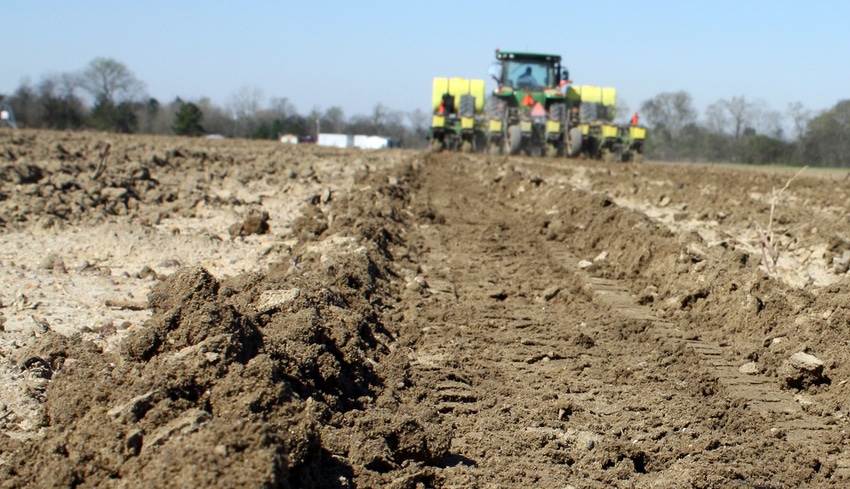
EDITOR'S NOTE: This article updated to correct mispelling.
Farmers often tell me, “Every time we hear you talk, Bob, you’ve got the newest, bestest programs that also costs the mostest! Don’t you have ANYTHING to tell us that doesn’t raise our production costs?”
I have seen no joy in the faces of growers when I recommend protecting corn, cotton and soybeans with fungicides. Growers respect the need for good fungicides in peanuts but are often dismayed at the cost of premium programs.
Diseases and nematodes have challenged row crop growers once again in the 2020. Rust diseases, bolls rots, late leaf spot, white mold and tomato spotted wilt will be chalked up as further examples of just how difficult this year has been.
After pondering the question, I came up with five things growers can do to reduce losses to diseases and nematodes with minimal increases in production costs. Though they are not new to you, these five opportunities should be at the heart of your management programs.
No. 1 - Resistant Varieties
Nematodes are accomplished thieves when it comes to robbing your cotton, peanut, soybea, and corn yields. There are no easy solutions once your field is infested. As you plan for 2021, you owe it to yourself to AT LEAST consider planting a root-knot nematode resistant variety (cotton, peanuts, and soybeans) or a reniform-resistant variety (cotton and soybeans).
Cost of these varieties is not much above “susceptible” varieties and much less expensive than use of nematicides. In addition to nematode resistance, cotton growers can also select varieties resistant to bacterial blight. Growers should carefully review corn hybrids for their resistance to “the blights." gray leaf spot, and anthracnose. Peanut growers should consult the 2021 Peanut Rx to determine varieties with partial resistance to Tomato spotted wilt, white mold, and leaf spot diseases.
No. 2 - Crop Rotation
Each of you reading this article recognizes that crop rotation is an essential tool and often the backbone of an effective disease management program. Increasing the length of time between peanuts in a field can reduce losses to leaf spot, white mold (southern stem rot), CBR (Cylindrocladium black rot), Rhizoctonia limb rot, and nematodes.
Crop rotation can reduce losses to nematodes, Fusarium wilt, and bacterial blight in cotton. It may also be helpful for managing target spot and areolate mildew. Rotation protects corn and soybeans from nematodes and many diseases, with the exception of those caused by viruses or rust fungi.
No. 3 - Footprints
You have probably heard it before, but “foot prints” are among the most important things you can put in your field. Careful scouting allows a grower to delay, or even eliminate, fungicide applications until there is true need. Scouting also allows growers to make important adjustments to a program, based upon diseases as they appear in a field. Scouting a field is critical for the most effective management of diseases and insect pests. Noting a problem from the cab of a tractor or through the windshield of a truck may be too late for any hope of effective treatment.
No. 4 - Planting Dates
Planting dates may be chosen based upon expected yields. Planting dates may be chosen based upon “when we have the other crop planted”. Planting dates may be based upon expected harvest dates. However, careful selection of planting dates can also affect risk to diseases as well. Planting date affects risk to our seedling diseases; planting in cooler (and wetter) soils predisposes the crop to seedling diseases. Earlier planting dates reduce risk of corn and soybean crops to rust diseases. Planting dates also affect risk of the peanut crop to Tomato spotted wilt, white mold, and leaf spot.
No. 5 - Timeliness
Timeliness”may be for something that can only be done at a specific point in the season- for example, much (if not all) of the management options for nematodes, Tomato spotted wilt, seedling diseases, and bacterial blight of cotton end when the furrow is closed. “Timeliness” applies to use of fungicides BEFORE disease is established. “Timeliness” is critical when “best” applications made at specific crop growth stages. For peanut farmers, “timeliness” also includes irrigation following a fungicide application to achieve maximum control of soilborne diseases.
The common denominator from above is that they add little cost to disease and nematode management, but each is essential for success of any program. These factors are also interrelated. Improved crop rotation may decrease the need for use of a resistant variety. Careful scouting aides in timeliness. Use of crop rotation and resistant varieties can expand planting date windows. Protecting a crop from diseases and nematodes is never easy and always adds to production costs. However, any costs associated with use of fungicides and nematicides are compromised if you ignore the “basics."
About the Author(s)
You May Also Like






